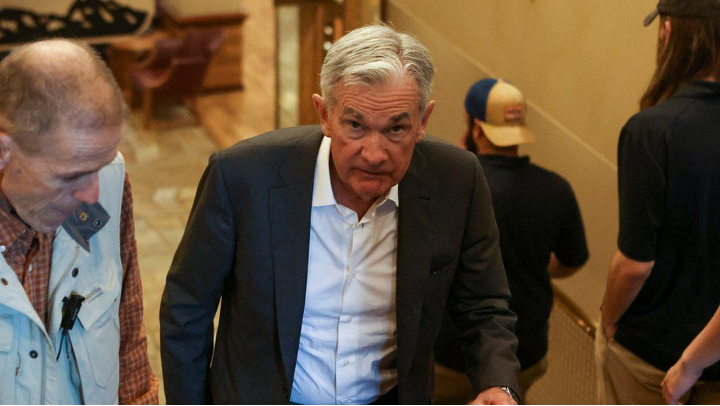A hawkish Fed remains nightmare fuel for the crypto king, while analyst sentiment appears to be with further corrections before the upswing.
Last Friday, Federal Reserve Chair and the most powerful crypto influencer in the world, Jerome Powell, announced that the US central bank will continue increasing interest rates to prevent inflation from becoming permanently embedded into the US economy.

For context, the key rate is already in a range of 2.25% to 2.5%, and is set against 8.5% CPI inflation. Significantly higher rates will be needed to get inflation down. And in March, interest rates were almost negligible.
The market response was immediate. The S&P 500 is now down 5%, and further falls seem likely. $1.25 trillion has already been wiped off the American stock markets.
Meanwhile, the US Dollar has strengthened even further against Sterling and Euro. And for crypto holders, Bitcoin fell below the symbolic $20k floor to $19,571, before recovering to flat trading at $20,278 today.
Where next for Bitcoin? It’s worth noting that the crypto leader has fallen by 57% over the past year, and by more than two-thirds since its $68,000+ record in November 2021.

This puts the argument that Bitcoin acts as a hedge against the stock market, inflation, or wider economic distress, to bed. It was only in January 2022 that Goldman Sachs was likening the crypto to ‘the new gold.’
But gold is now just shy of record highs, while Bitcoin is acting more like a stock, languishing in the red. This means Powell’s words matter for Bitcoin. Investors now know that more hikes are coming, and that tighter monetary policy will continue ‘for some time.’ Worse, ‘reducing inflation is likely to require a sustained period of below-trend growth.’
And the takeaway is this: ‘While higher interest rates, slower growth and softer labour market conditions will bring down inflation, they will also bring some pain to household and businesses.’
Of course, Powell wants to avoid the inflationary trap that saw his predecessor Paul Volcker forced into raising rates to over 20%, causing a sharper recession that could have been avoided with more timely action.
However, this choice has ensured that the hoped-for soft landing is dead.
KPMG chief economist Diane Swonk argues that Powell has ‘buried the concept of a soft landing…the Fed’s goal is to grind inflation down by slowing growth below its potential. It is a torturous process but less torturous and less painful than an abrupt recession.’
Can Bitcoin recover?
Despite the slight recovery, the Bitcoin market remains in the ‘extreme fear’ category of the Fear and Greed Index (F&G) with a score of just 23. And where it goes next is as much a question of art as it is of science.
LookIntoBitcoin’s Philip Swift argues that market sentiment is nowhere close to as negative as it was in June when Bitcoin’s score fell to a low of just 6, after forced selling caused by the collapse of Three Arrows Capital and Terra. He notes ‘there was blind panic back then, whereas we are currently in a period of apathy where people are tired of the bear market.’
Joe DiPasquale, CEO of crypto fund manager BitBull, thinks that ‘macroeconomic uncertainties continue to weigh on the price of Bitcoin. We will be watching for the market’s reactions to new lows and aiming to accumulate Bitcoin between $20,000 and $15,000.’
However, many feel the crypto is close to the floor. Ecoinometrics analyst ‘Nick’ thinks ‘in this bear market, you want to either dollar cost average in a position or straight up buy the dip and wait.’
Alex Thorn, Firmwide Research Head at Galaxy Digital, notes that Bitcoin is trading both below its 200-week moving average, and its realised price (average investor cost basis). In the four times this has happened in the past, Bitcoin has always recovered to new highs.
As Thorn points out, ‘the times when Bitcoin/U.S. dollar trades below its 200-week moving average have proven to be favorable buying opportunities across a range of time periods.’
However, he is expecting the lowest support level to come in at $17,700, with a medium-term price target of $25,000. This is quite a range, implying significant near-term volatility. Fundstrat analyst Mark Newton appears to concur, signalling the $17,500 floor as a ‘real area of importance.’
Glassnode data gives weight to their opinions. Bitcoin investors are selling, realising an average $220 million daily loss. In its weekly report, the company argues that investor psychology is currently geared around getting money back rather than generating a profit, putting a ceiling on the Bitcoin bulls.
Overall, a fall below $19,000 seems a reasonable outcome, before a sustained recovery can commence.
This article has been prepared for information purposes only by Charles Archer. It does not constitute advice, and no party accepts any liability for either accuracy or for investing decisions made using the information provided.
Further, it is not intended for distribution to, or use by, any person in any country or jurisdiction where such distribution or use would be contrary to local law or regulation.
